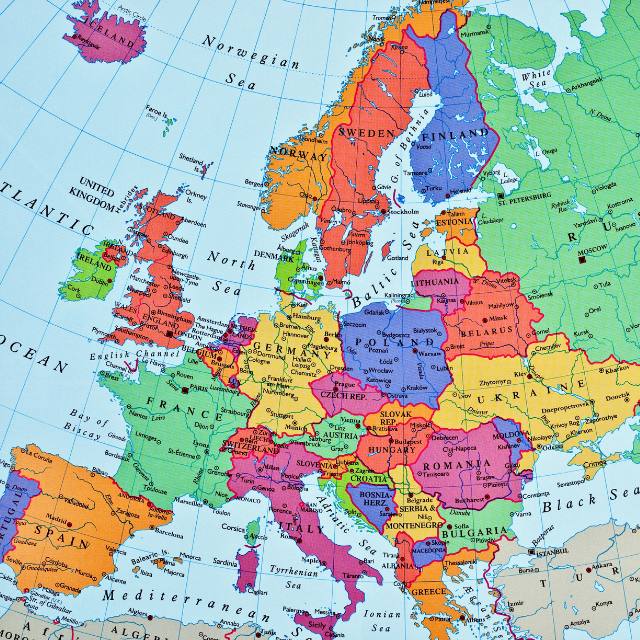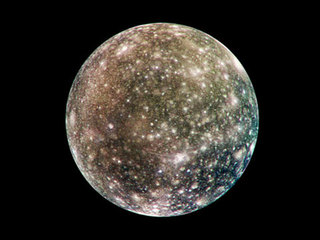*This post may contain affiliate links. This means we may make a commission if you purchase an item using one of our links*
Europe is the second smallest continent on Earth, whilst Callisto is the third largest moon in our solar system. Still, there’s no comparison regarding which one is bigger as the former is a flat land mass with a surface area of 10.53 million square kilometers and a volume of 420 million cubic kilometers while Callisto is a spherical body with a surface area of 70 million kilometers and a volume of 60.8 billion cubic kilometers.
For a more detailed look at what makes each entity as big as they are, continue reading as it will be covered below.
How Big Is Europe?

Europe is technically considered the second smallest continent in the world, only beaten by Australia. Europe comprises the far west projecting peninsula of Eurasia, a landmass it shares with Asia, and the small continent makes up 2% of the earth’s surface.
Europe’s territory can be tricky to pinpoint. But we will do our best to explain it for you; the Artic ocean borders its to its North and the Atlantic Ocean lies to its West. To the South lies the Mediterranean and Black seas, the Kuma Manych Depression, the Caspian sea, the Ural mountains, and the Zhem River divide it from Asia.
From north to south, Europe covers an area of 3,341 kilometers and spreads approximately 2,154 from east to west. However, because it is an irregular shape, these measurements, when totaling the circumference to find out the land mass, you end up with a greater number; Europe covers a total landmass of 10.53 million square km.
Europe’s coastline is full of seas, fjords, and bays and runs for approximately 38,000 km. It has several islands, including Iceland, Ireland, the British Isles, Sardinia, Malta, Crete, and Cyprus.
As Europe is a continent, it comprises various countries, each with its borders. Some of the largest countries in Europe and their landmasses include France, with 547,030 square kilometers; Sweden, with 449,964 square kilometers, Ukraine, with 603,700 square kilometers; and Poland, with 312,685 square kilometers.
As a result it overall volume if say the average crust across all of the countries present within in it were to 40km, would be 420 million cubic kilometers.
How Big Is Callisto?

Callisto is a moon of Jupiter and the third largest moon in the Solar System, which was discovered in January 1610 by Galileo Galilei.
The diameter of Callisto is 4,820.6km, while its surface area is 73,000,000 sq. km, a far greater expanse than that of Australia. Still, like our seventh largest country, the terrain of Callisto varies, and it is the most heavily cratered object in our solar system.
Calisto’s volume is an impressive 59,000,000,000 cubic km, giving it a similar size to the planet Mercury (60.8 billion cubic km). Callisto is classified as a moon and not a planet because it orbits Jupiter rather than the Sun. Still, it is one of the largest moons in the Milky Way and covers an impressive expanse.
This mega moon is 99% as big as Mercury, but it only possesses a third of its weight because of the moon’s mixed composition.
Callisto’s average density is 1.83 cubic cm, which suggests that it is made of roughly equal parts of water ice and rocky material, plus additional volatile ices (like ammonia). Scientific research into the moon suggests that 49-55% of its total constitution is ice. The remaining rock is likely composed of silicates, chondrites, and iron oxide.
Still, the water ice only accounts for between 25 and 50% of the planet’s overall mass.
The surface of Callisto is heavily cratered and has a dark appearance. Scientists believe that the bright patches consist mainly of ice, while the darker patches show areas where the ice has eroded. The most distinctive crater is Valhalla, with its bright central region.
In the past, many scientists thought this huge “hunk of rock and ice” was “boring” because it had no shifting tectonic plates and no volcanic activity. At first appearances, it seemed to be a dead world.
Still, more recent research by NASA scientists concludes that Callisto could house a salty ocean interacting with rocks that are more than 250 km below the surface. Combine this with detections of oxygen in the exosphere, and today Callisto is included in the list of places where life could exist beyond Earth.
Callisto is 180 times farther from Earth than our moon, but its large amount of surface ice makes it shine brighter than our moon. Earth’s moon reflects only 0.12% of the Sun’s light, whereas Callisto reflects up to 20%.
Summary
Callisto is far bigger than the continent of Europe as it is amongst the largest moons in our solar system, whether it be in regards to surface area or volume.
In regards to surface area, Callisto is roughly 7 times larger and in regards to volume, due to the moon’s sepherical nature, it is numerous times larger, roughly 140 times that of Europe.

